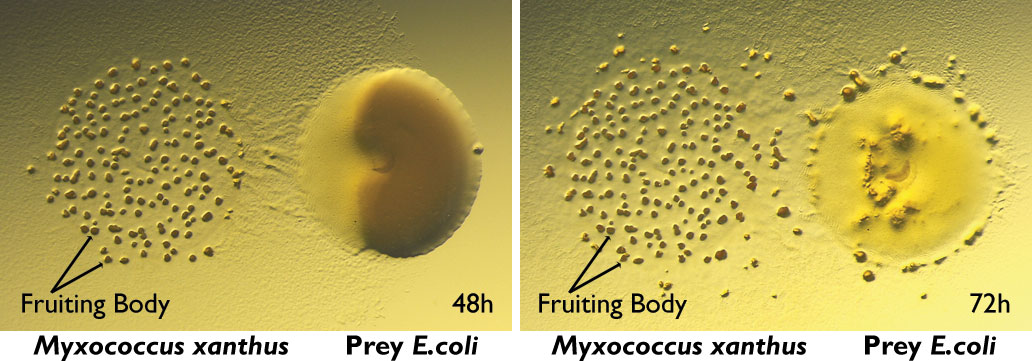Eavesdropping on Bacterial Chatter
Bacteria constantly "talk" to each other using chemical signals in response to environmental changes, leading to behavior modification. Our research focuses on understanding cell-to-cell communication and gene regulation in bacteria. We use microbiology and molecular genetics tools to explore this process using Myxobacteria as the model system.
Myxobacteria are a group of gram-negative, rod-shaped bacteria found in soil that travel in “wolf-packs”, devouring prey bacteria, yeast, and other organic detritus. The bacteria do this by lysing targeted prey cells to obtain cellular components as nutrients needed to sustain growth. The detection of prey cells requires extensive and well-regulated intra- and interspecies interactions. When starved of needed nutrients, myxobacteria form fruiting bodies—compact structures within which rod-shaped cells transform into spherical dormant spores that germinate when favorable conditions return.
Myxobacterial Predation against Escherichia coli

In our research group, we work to solve fundamental questions in cell-signaling and developmental gene regulation. Myxobacteria compete with other microbial species by producing a slew of metabolites to inhibit their growth and influence their behavior in a myriad of ways. Their genomes demonstrate the presence of a mutiplicity of signal sensing genes. In fact, the first eukaryotic-like protein kinase reported in any bacterium was found in Myxococcus xanthus! This makes them excellent models to study cell differentiation and to investigate the mechanisms by which microbial communities sense and respond to environmental and cell-to-cell signals.










